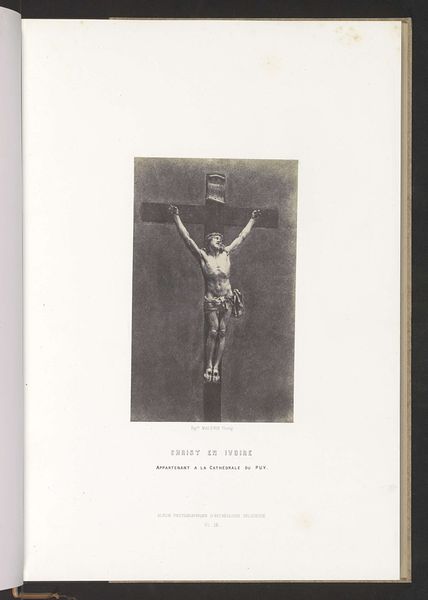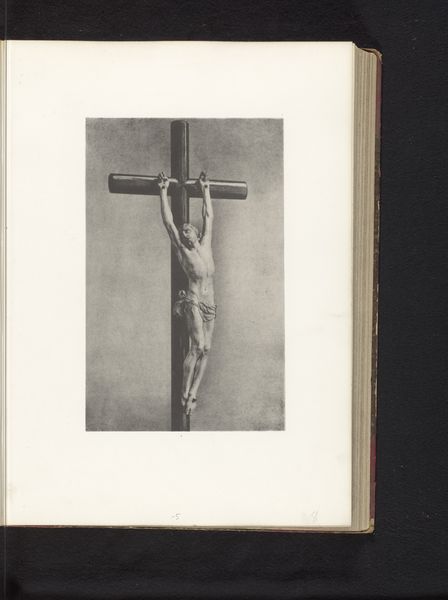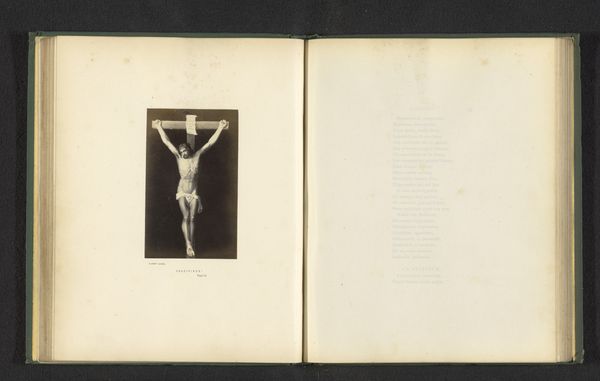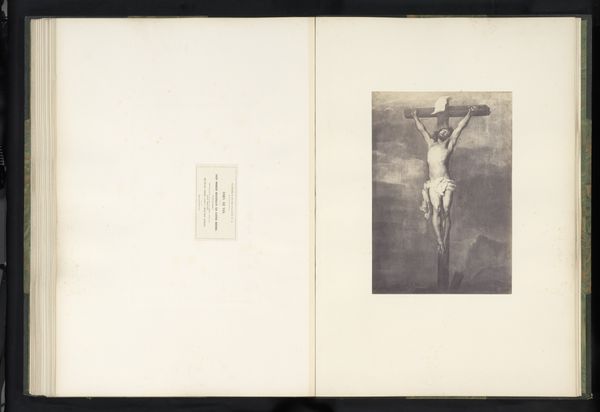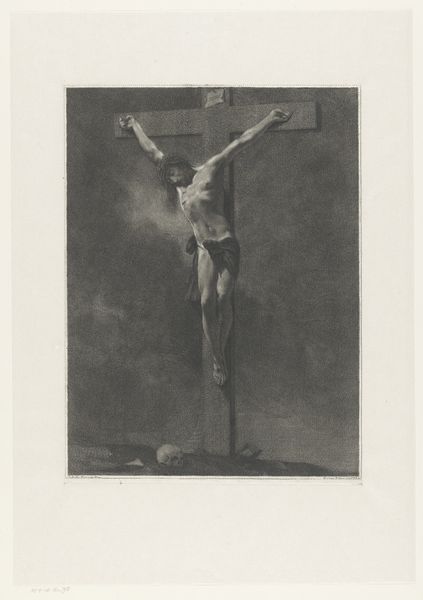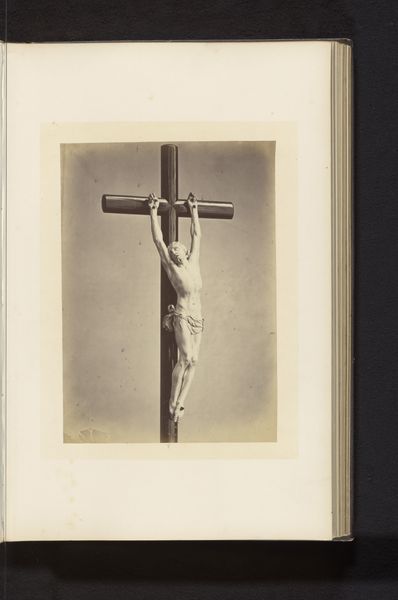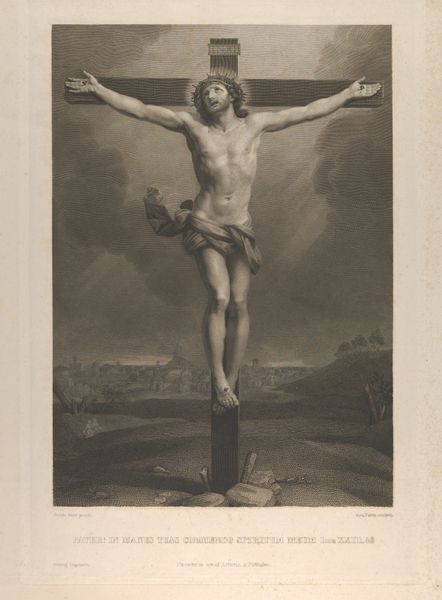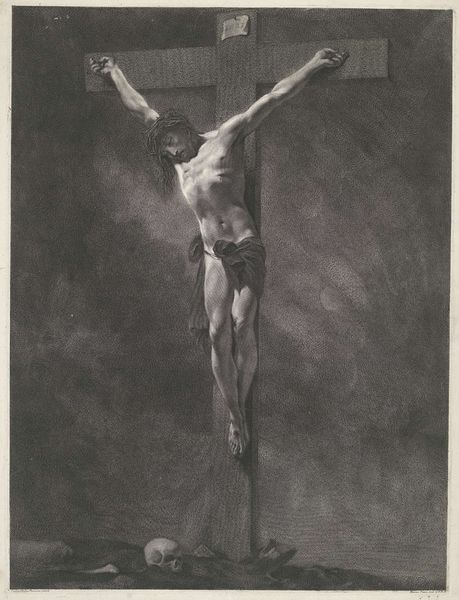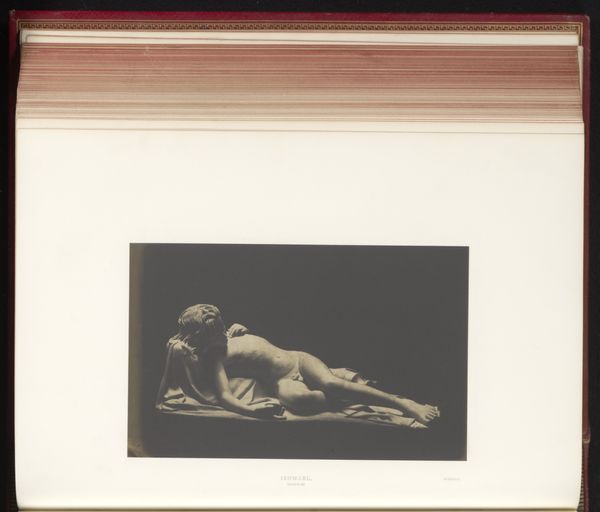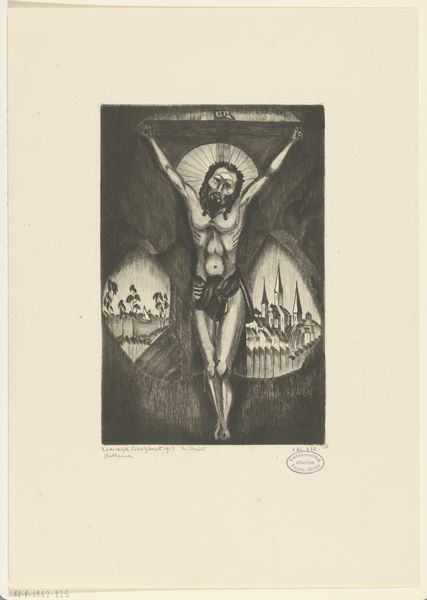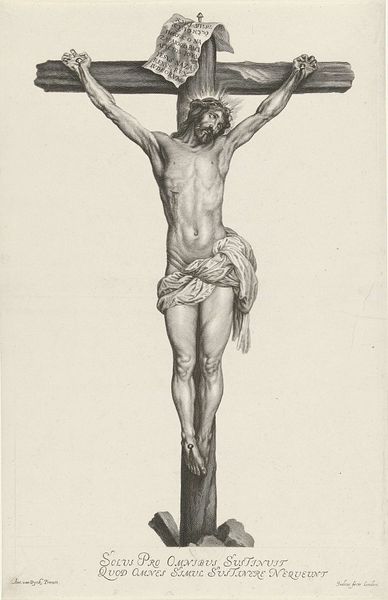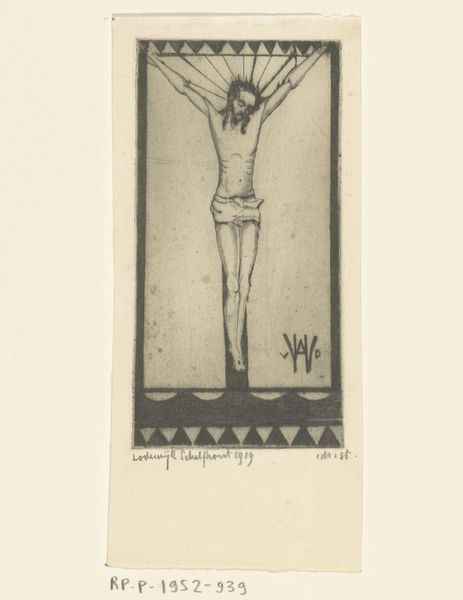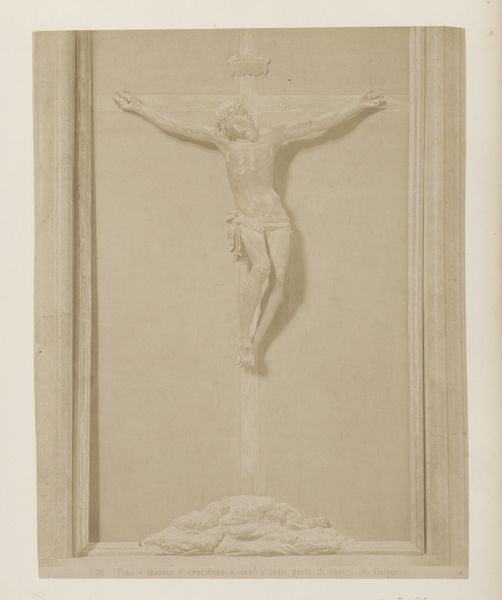
Ivoren sculptuur van Christus, opgesteld tijdens de Exposition Rétrospective van 1873 in Tours, Frankrijk 1873
0:00
0:00
sculpture, ivory
#
portrait
#
sculpture
#
genre-painting
#
history-painting
#
academic-art
#
ivory
#
realism
Dimensions: height 247 mm, width 173 mm
Copyright: Rijks Museum: Open Domain
Gabriel Blaise crafted this ivory sculpture of Christ, displayed in Tours, France, in 1873. Here, we witness the dominant symbols of Christian iconography: Christ on the cross, crowned with thorns, a visual shorthand for suffering, sacrifice, and redemption. This image of crucifixion is not unique; we see echoes of it in countless depictions across history, from Byzantine mosaics to Renaissance paintings. The image is emotionally charged and deeply rooted in our collective consciousness. Consider the gesture of outstretched arms – a pose of vulnerability but also of all-encompassing embrace. The motif of the crown of thorns is particularly potent, evoking both pain and kingship. Originally a symbol of humiliation inflicted by Christ's tormentors, it has been reclaimed to represent spiritual sovereignty. This transformation speaks to our complex relationship with suffering, a theme that resurfaces time and again in art, each time molded by the anxieties and aspirations of its age.
Comments
No comments
Be the first to comment and join the conversation on the ultimate creative platform.
